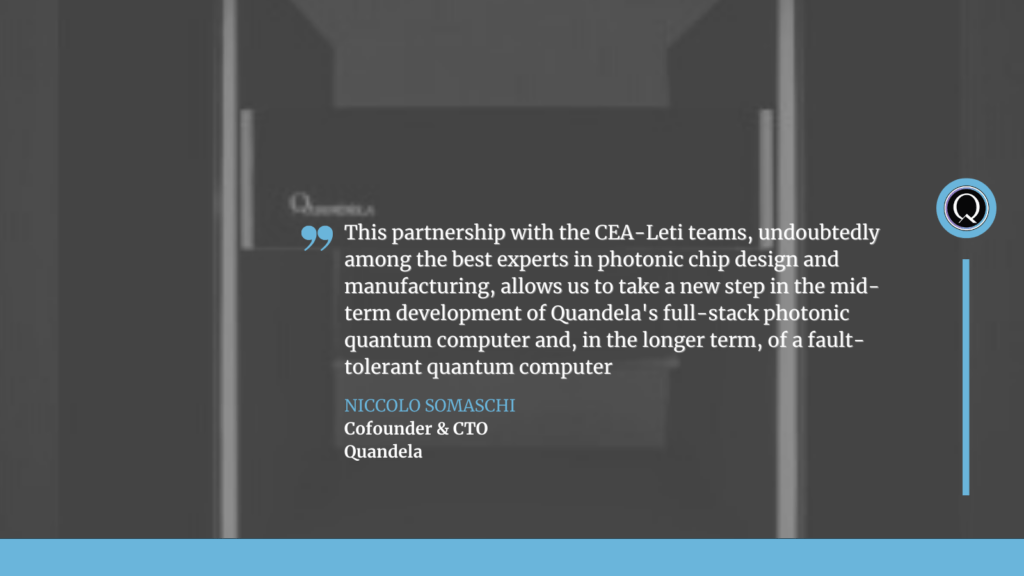Paris, 10 October 2022 – The French start-up Quandela has signed a partnership with
the Electronics and Information Technology Laboratory of the French Atomic Energy
Commission (CEA-Leti) to produce a 100% French high-performance photonic chip. As
part of this partnership, CEA-Leti is making its expertise and manufacturing platform
available to Quandela. The first chips will be available in early 2023.
This partnership will allow Quandela to fully control the process of creating these photonic
chips.
Quandela also contributes to France’s and Europe’s need for technological independence: this
100% French-made chip secures the supply of photonic quantum players and allows French
sovereignty to emerge in this field.
Quandela’s photonic technology has many advantages over other quantum technologies, as
photons are not sensitive to perturbations in their environment, allowing photonic processors
to operate largely at room temperature. In addition, the quality of the single-photon source
developed by Quandela makes it possible to remove the theoretical barriers to the
development of fault-tolerant quantum computers. CEA-Leti is now the best partner to work on
the development of photonic chips with a performance adapted to this new step taken by
Quandela. “This partnership with the CEA-Leti teams, undoubtedly among the best experts in photonic
chip design and manufacturing, allows us to take a new step in the mid-term development of
Quandela’s full-stack photonic quantum computer and, in the longer term, of a fault-tolerant
quantum computer” explains Niccolo Somaschi, co-founder of Quandela.
About Quandela
Quandela, entreprise leader dans le domaine du calcul quantique, propose des solutions de niveau industriel. Quandela conçoit, construit et fournit des systèmes quantiques prêts à l’emploi pour les datacenters, des processeurs quantiques accessibles via le cloud, et des services d’accès aux algorithmes.
Fondée en 2017 par la professeure Pascale Senellart, directrice de recherche au Centre de nanosciences et nanotechnologies (C2N) du CNRS, Niccolo Somaschi et Valérian Giesz, experts de renommée internationale en physique quantique, Quandela emploie plus de 100 collaborateurs de 20 nationalités différentes, en majorité des chercheurs et des ingénieurs en optique, algorithmes et sciences de l’information.
Quandela s’engage à rendre l’informatique quantique accessible à tous pour relever les défis industriels et sociétaux les plus complexes.
Pour en savoir plus : www.quandela.com
GB
Quandela, a leader in quantum computing, specializes in industry-grade quantum computing solutions. Quandela designs, builds, and supplies datacenter-ready quantum computing systems, cloud-accessible quantum processors, and algorithm with industrial value.
Founded in 2017 by Professor Pascale Senellart, Research Director at the Centre for Nanosciences and Nanotechnologies (C2N) at CNRS, Niccolo Somaschi and Valerian Giesz, internationally renowned experts in quantum physics, Quandela currently has over 100 employees from 20 different nationalities, mostly researchers and engineers in optical, algorithm and data science.
Quandela is committed to making advanced quantum computing accessible and beneficial for all, empowering innovators to solve the most complex industrial and societal challenges.




